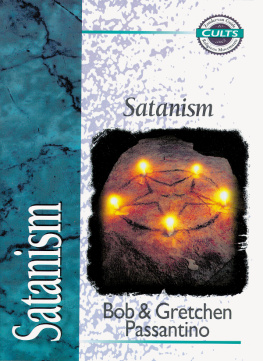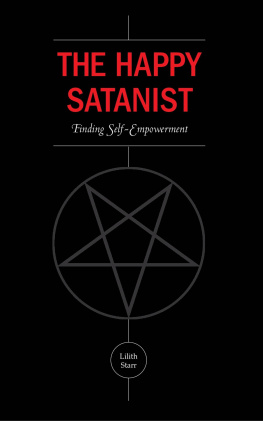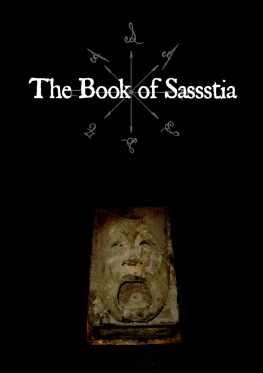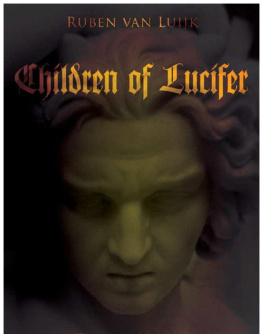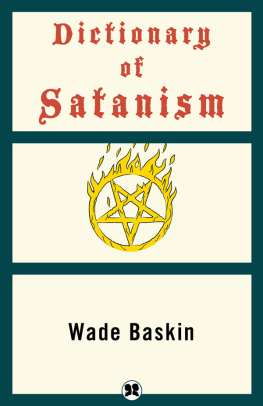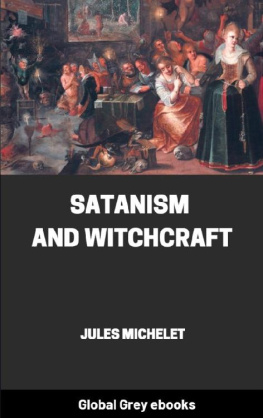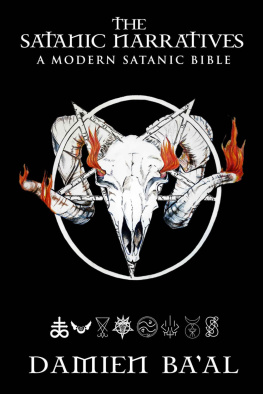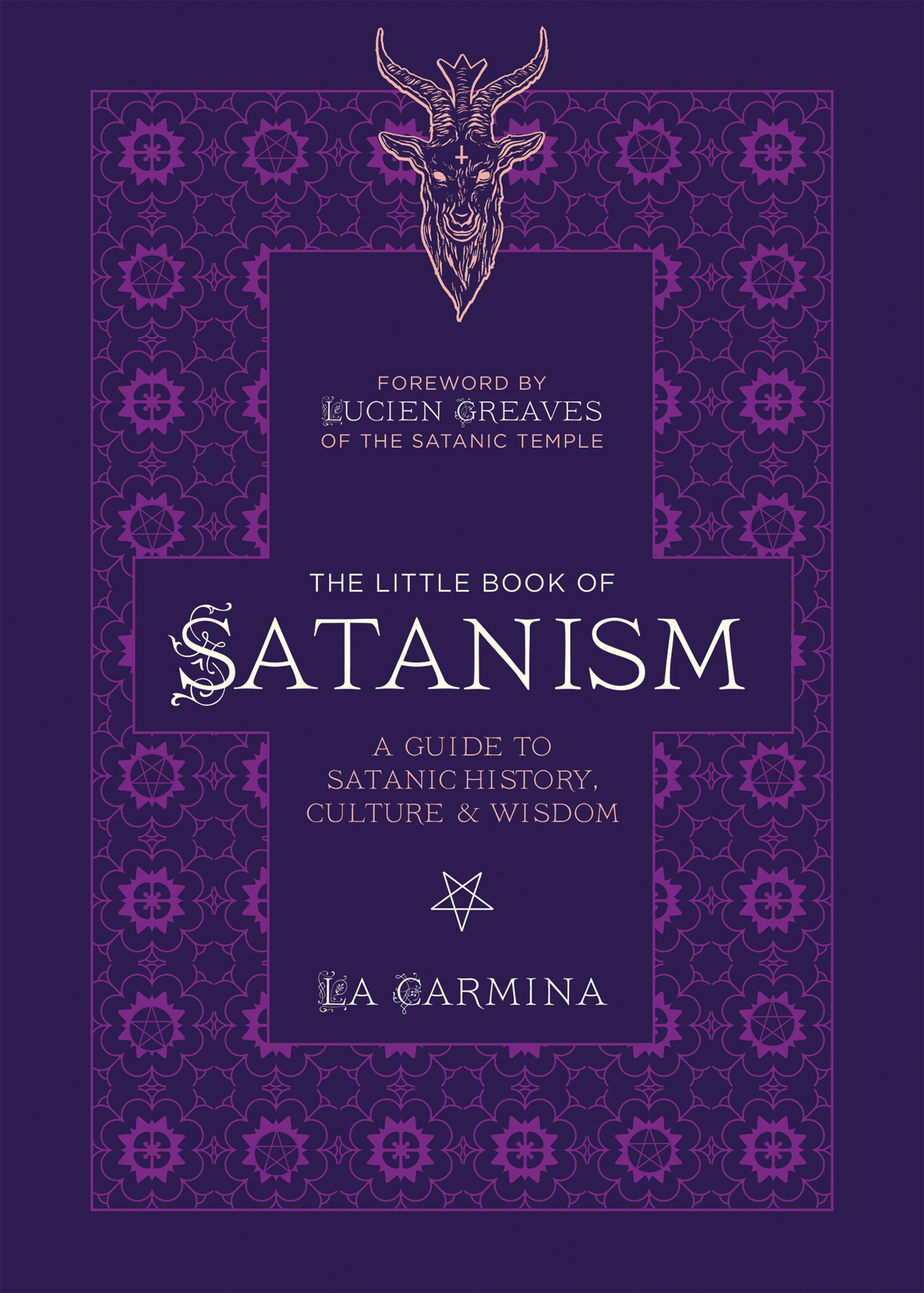Contents
Guide
Foreword by Lucien Greaves of the Satanic Temple
The Little Book of Satanism
A Guide to Satanic History, Culture & Wisdom
La Carmina

Those who consider the Devil to be a partisan of Evil and angels to be warriors for Good accept the demagogy of the angels. Things are clearly more complicated.
M ILAN K UNDERA , T HE B OOK OF L AUGHTER AND F ORGETTING

FOREWORD BY LUCIEN GREAVES

When I seek to confront misconceptions about Satanism, the immediate assumption is that I will scrutinize the improbable, and already long debunked, conspiracy theories about a secretive, cannibalistic worldwide cabalonce the paranoid fantasy of 1980s daytime talk shows and again finding a credulous audience in todays deluded QAnon movement. These confrontations with conspiracy theories necessarily focus on what Satanism is not, delving into the evolution of the folklore of Satanic Ritual Abuse, historic witch hunts, and the discrediting of Satanic Panic fictions sold as true storiessuch as the influential 1980 mass-market best seller Michelle Remembers, which purported to be a true account of recovered memories of Satanic cult crimes.
As horrific as Satanic Panic narratives are, with their insistence that real Satanism is necessarily cruel, bloodthirsty, and antihuman, there are more insidious misconceptions of Satanism that are pervasive among more reasonable minds and that are less vulnerable to an appeal to critical thinking.
After Malcolm Jarry and I cofounded The Satanic Temple in 2013, our demands that Satanism be represented in public forums where religious expression has been put on display led many of those who have been concerned by the erosion of separation of church and state to assume that we had found a loophole in religious liberty laws. It is a loophole, they believe, that we exploit to underscore the hypocrisy of religious zealots who vehemently fight back against Satanists having equal access to a forum that the theocrats themselves secured access to in an appeal to freedom of speech.
The fact that modern Satanism is largely nontheistic, with the majority of self-identified Satanists openly disavowing belief in a literal Satan, has contributed to the notion that those who self-identify as Satanists do so, first and foremost, to best elicit hypocritical responses from the free speech theocrats. After all, the First Amendment is meant to guarantee that the government cannot engage in viewpoint discrimination by allowing one religious voice in a public forum while excluding another. How better to confront the theocrats efforts to expand religious privileges than to show them that their efforts are aiding the proliferation of the religious identity that they like the least?
To many, unfortunately, this kind of Satanic public activism appears to be an elaborate, clever prank. To this audience, the paranoid fictions of the Satanic Panic are clearly bogus, and the homicidal cults once said to be concealing backward messages in heavy metal music, while indoctrinating children through Dungeons & Dragons role-playing sessions, obviously never existed. However, nontheistic Satanism appears to these observers less as the truth about Satanism as a religious identity and more as another narrative about a religion that does not really exista convenient label for a certain type of atheist activist who knows how to fight Christian nationalists on their own terms.
Media outlets that have covered the activities of The Satanic Temple have often shamelessly given substantial airtime to our opposition without trying to gain any understanding of who we are, or what we are doing, by seeking any comment from us at all. Legal experts, asked by journalists to measure the credibility of some of the lawsuits we have filed in defense of our religious rights, almost universally exhibit a total failure to learn the first thing about Satanism before weighing in.
Thus, with no understanding of the fact that The Satanic Temple has more than half a million followers worldwide, with an ever-growing number of active congregations that engage in regular activities and services, these experts will often state that our status as a bona fide religion is still in dispute. Apparently ignorant of the Internal Revenue Services recognition of The Satanic Temples tax-exempt status in 2019 and unaware that a federal judge affirmed our undeniable religious authenticity in an equal access dispute ruling in 2020, legal scholars still treat the sincerity of our claims as an open question.
All of this, of course, ignores the large and growing subculture of individuals for whom Satanism is a meaningful religious identity, regardless of the reaction this identity provokes in other people. The blasphemous iconography of Satanism is, for most Satanists, a declaration of personal liberation from traditional theistic institutions and the sometimes arbitrary restrictions they impose on their followers, rather than a calculated insult directed at faithful believers with the intention to offend. And, far from being a mere loophole or prank, meant only to raise awareness of Christian nationalist hypocrisy, our demands for equal access in public forums are a legitimate battle to preserve true religious liberty.
The stakes in the Satanist battle for religious liberty are high, and the ramifications for the outcomes extend far beyond those who identify as Satanists and those who actively oppose us. Will we allow the civic capacities of certain religious identities to be expanded while excluding others? Are claims of conscience to be respected only when presented by certain approved faiths? Indeed, are claims of conscience to be invalidated if not attached to archaic supernaturalist traditions? If public officials are able to deny basic civil liberties to Satanists, even if they do wrongly assume that Satanism is a provocation rather than an authentic religious identity, whom might they target next?
There is a critical need for handy resources that can disabuse the public of misconceptions about Satanism. The best way to do so is to educate people about what Satanism is, rather than continually explaining what it is not. Although The Satanic Temple was founded only in 2013, a long history charts the evolution of modern Satanism from Miltons poetic elaboration of the ultimate rebel against tyranny, to the literary Satanists of the nineteenth century, to the theatrical Satanism of Anton LaVeys Church of Satan in the 1960s.
In making clearer and more accessible histories of modern Satanism, the hope is that broader audiences can begin to understand what Satanism really means to those who practice it. Perhaps it will become clearer to readers why Satanism is a nonnegotiable identity to some; indeed, it is their religion. And, perhaps, for a still more aspirational hope, there are some readers, with religious views that they believe to be diametrically opposed to Satanic values, who will nonetheless understand that equality for Satanists is worth defending so that we do not submit ourselves to the far greater evil of an arbitrarily regulated religious consciousness. There is even the hope that some, of traditional religious faiths, can learn about Satanism and conceive of a world in which theyunder a different set of circumstancescould find Satanism to be a source of comfort and community as well.


